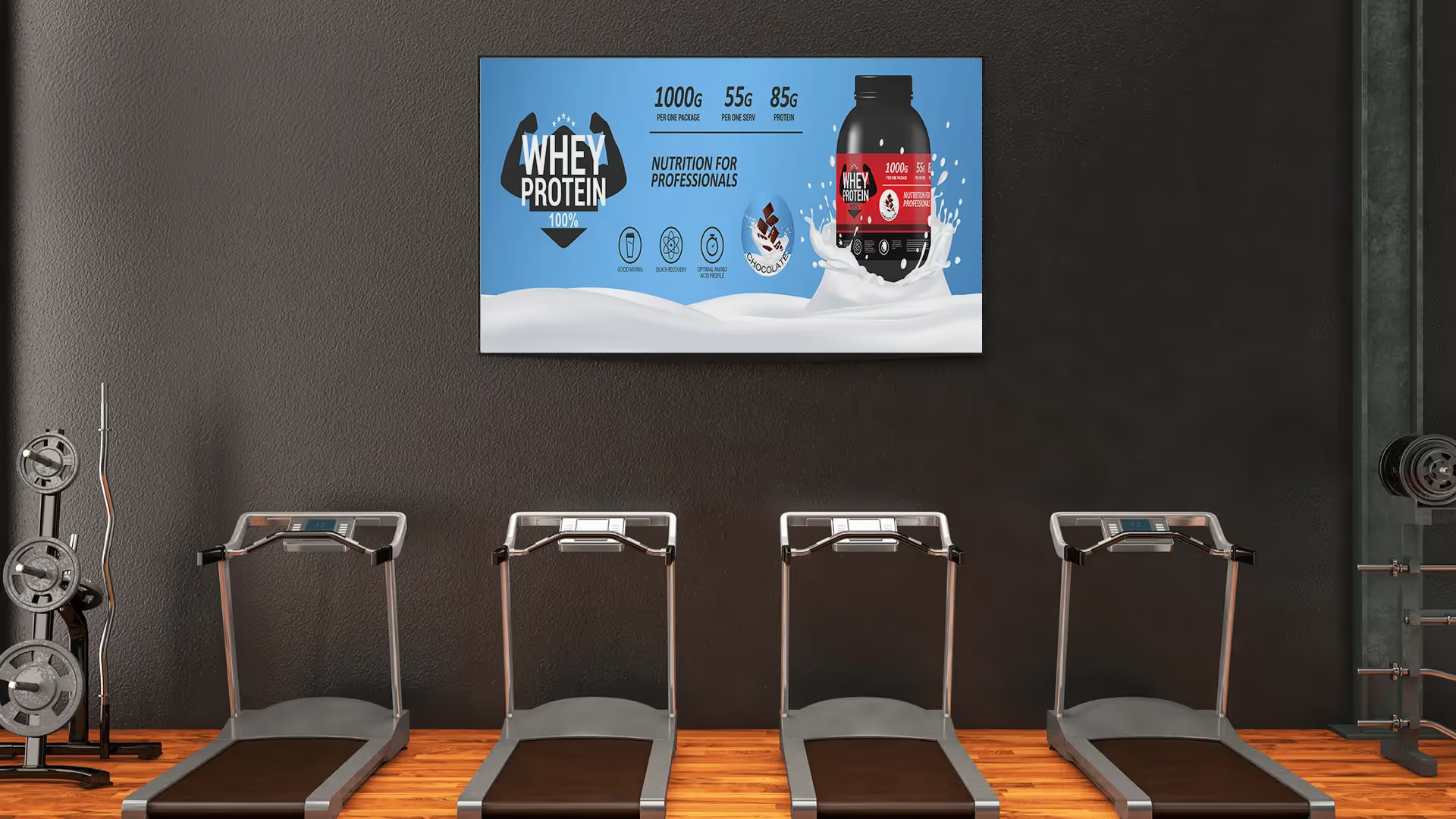What to remember
Digital signage has many advantages over printed posters: it eliminates the need for printing and the use of paper while reducing the number of deliveries. However, the carbon footprint is never zero and the use of a digital signage solution involves the use of screens, which consume energy. How can you ensure that your digital signage is as eco-friendly as possible?
This series of articles presents the various elements to take into account during an environmental audit of your equipment Hardware and software to your data storage. Here we will focus on the various digital signage software and solutions.

To choose your digital signage content management system (CMS), several elements must be taken into account: the compatibility of the player with the CMS, the integrated energy-saving features, and data storage (datacenter).
Choosing a more responsible CMS and player
All digital signage content management systems require a Player, which allows you to connect your screen and broadcast content to it. The player can be a separate hardware component (a box) or integrated directly into the screen.
In the case of a physical player (box), the same elements must be taken into account when choosing screens.
- Where was the player made? What carbon footprint does it require to be delivered?
- What is its energy consumption once it is on?
- Are the working conditions put in place by the manufacturer ethical?
For example, one of the most energy-efficient players is the Raspberry Pi, a nano-computer the size of a bank card. It was developed in the United Kingdom by a non-profit organization, and is manufactured in the United Kingdom, China, and Japan. A Raspberry Pi adapted to the operation of digital signage consumes little power, and has a consumption of only 3.5 W, i.e. ten times less than a conventional reader.
For “embedded” players: you won't need an external player. The installation will therefore be easier, with one component less.
Energy saving features
The best way to reduce the amount of energy consumed by your digital signage system on a daily basis is to make sure that your screens don't stay on unnecessarily.
Choose CMS software that offers the possibility of controlling and automating the switching on and off of your fleet of screens in a way centralized, which will allow you to easily turn them off remotely during the night or when your business is closed. This is much more convenient than asking employees to manually turn them off every night, especially if you use digital signage on a lot of sites.
.gif)
Greener data storage
THE carbon footprint of digital data is often forgotten when looking for more environmentally friendly practices. However, the significant growth in the volume of data we generate has led to an increase in storage in gigantic buildings that use a large amount of energy and resources (electrical and air conditioning equipment).
To reduce your carbon footprint, you can use a company that operates a responsible data center. For example, Microsoft is on track to meet its goal of powering its data centers with 100% renewable energy.
→ Best practice: Your digital signage campaigns will involve relatively large image and video files. To reduce your storage needs, delete old campaigns that you no longer need.
Cenareo offers an intuitive, scalable Saas solution and perfectly adapted to the needs of communication professionals in all sectors of activity: Points of sale, Internal communication, Hotels and restaurants but also DOOH.
Our eco-responsible commitment
Our commitments to help you conduct a more sustainable business? Every decision we make about our digital signage solution is guided by the desire to help our customers communicate more easily, more sustainably, while minimizing their carbon footprint.
To do this, we designed a robust solution composed of a SaaS platform and a player Raspberry Pi, a reader that consumes very little power, with a consumption around ten times lower than a conventional digital signage player. Beyond its functional qualities, we chose the Raspberry Pi because it is manufactured by the English Raspberry Pi Foundation. This charitable association aims to provide access to technology and education in developing countries. We create and assemble this player in our offices in Toulouse. It is made available to our customers free of charge. In the event of a malfunction or at the end of the contract, we recover this equipment and reuse these components to create new players.
As providers of cloud-based digital services, we process large volumes of image and video data for our customers and we recognize that we are driving demand for data centers, and therefore energy demand. That's why we called on Microsoft, which achieved carbon neutrality in 2012 and is pursuing the goal of powering its centers with 100% renewable energy.
Our screen supplier partners act at their level to recycle used screens.
In addition, we offer an energy-saving feature that allows you to turn off all your digital signage screens at night, centrally. Every day, we strive to improve the sustainability of digital signage, so that businesses can adopt a more creative and engaged communication approach.













